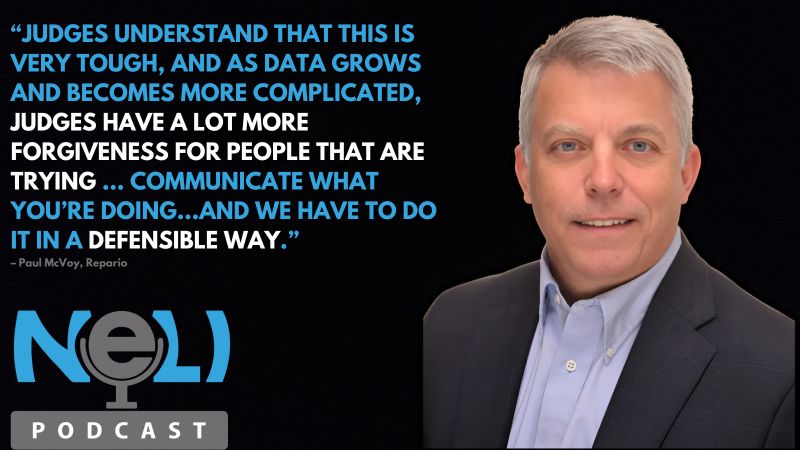How eDiscovery Can Help Banks Solve Complex Fraud Cases

TL;DR: Key Takeaways
Discover how eDiscovery assists banks and financial institutions effectively tackle complex fraud cases.
- eDiscovery is indispensable for banks and financial institutions, helping to reveal hidden patterns and relationships in vast data sets.
- It plays a key role in spotting unusual transactions and activities, indicative of fraud.
- Advanced technology simplifies investigative processes and enhances compliance measures.
- By leveraging eDiscovery, banks can save significant resources and strengthen their fraud prevention frameworks.
Understanding the Role of eDiscovery in Fraud Investigations
eDiscovery is crucial for fraud analysis and investigations for banks and financial institutions. It involves the identification, preservation, collection, and analysis of electronic data to uncover evidence related to fraudulent activities. Using cutting-edge technology and data analysis, eDiscovery helps investigators efficiently sift through large data volumes to find critical evidence.
In fraud investigations, eDiscovery aids in determining the scope and scale of fraudulent activities, identifying potential perpetrators, and uncovering hidden connections. It provides a comprehensive view of the electronic evidence, including emails, documents, financial transactions, and communication records, which are fundamental in building a strong case.
Uncovering Hidden Patterns and Relationships
One of the key advantages of eDiscovery in fraud cases is its ability to uncover hidden patterns and relationships. By analyzing large volumes of data, including financial transactions, communication records, and other electronic evidence, eDiscovery tools can identify suspicious patterns and connections that may not be easily visible to human investigators.
For instance, it can analyze transaction data to spot unusual activities suggesting fraud or scrutinize communication records to reveal hidden networks involved in fraudulent schemes. By revealing these hidden patterns and relationships, investigators gain valuable insights that contribute to the investigation and prosecution of complex fraud cases.
Identifying Suspicious Activities through Data Analysis
Data analysis is a core feature of eDiscovery in fraud investigations. Advanced analytics help pinpoint anomalies and red flags in financial transactions, such as high-value transfers or unusual patterns, enhancing the detection of fraudulent activities.
For instance, eDiscovery can analyze financial transaction data to identify transactions that deviate from normal patterns or exhibit red flags. These red flags could include transactions involving high amounts, frequent transfers to offshore accounts, or unusual transactional patterns. By flagging these suspicious activities, eDiscovery helps investigators focus their efforts on the most relevant evidence, saving time and resources.
Moreover, you can layer in information governance tools that leverage machine learning to continuously learn and adapt to new fraud patterns, enhancing your ability to detect and identify suspicious activities.
Streamlining Investigation Processes with Advanced Technology
eDiscovery technology streamlines the investigation processes for banks and financial institutions by automating various tasks and reducing manual efforts.
For example, eDiscovery tools can automatically collect and process electronic data from multiple sources, such as email servers, databases, and file repositories. This automation eliminates the need for manual data collection, saving time and ensuring the integrity of the collected evidence.
Furthermore, eDiscovery tools can also provide advanced search and filtering capabilities, allowing investigators to quickly locate and retrieve relevant documents and information. This streamlines the review process and enables investigators to focus on analyzing the evidence rather than spending valuable time searching for it.
Enhancing Compliance and Regulatory Measures
eDiscovery also plays a vital role in ensuring compliance with regulatory standards in the banking sector. This is achieved through effective electronic data management, vital for regulatory adherence, and aids in proactively identifying and addressing compliance issues, thus reinforcing the overall compliance framework.
Additionally, eDiscovery also helps banks in proactively identifying and addressing potential compliance issues. By analyzing electronic data, organizations can identify any non-compliant activities or patterns and take necessary actions to rectify them. This proactive approach not only helps in preventing fraudulent activities but also strengthens the overall compliance framework of the institution.
Closing Thoughts: Elevating Fraud Detection with eDiscovery
In conclusion, eDiscovery emerges as an indispensable tool for general counsel and fraud investigation teams in banking and financial institutions. Its ability to effectively navigate and analyze vast amounts of electronic data makes it pivotal in uncovering fraudulent activities and hidden patterns within financial transactions.
By leveraging advanced technology, eDiscovery not only enhances the efficiency and thoroughness of investigations but also significantly contributes to maintaining regulatory compliance and strengthening fraud prevention frameworks.
As the financial sector continues to evolve amidst increasing digitalization, the role of eDiscovery in safeguarding institutions against complex fraud cases becomes ever more critical, making it a key asset in the arsenal of financial fraud prevention strategies.




